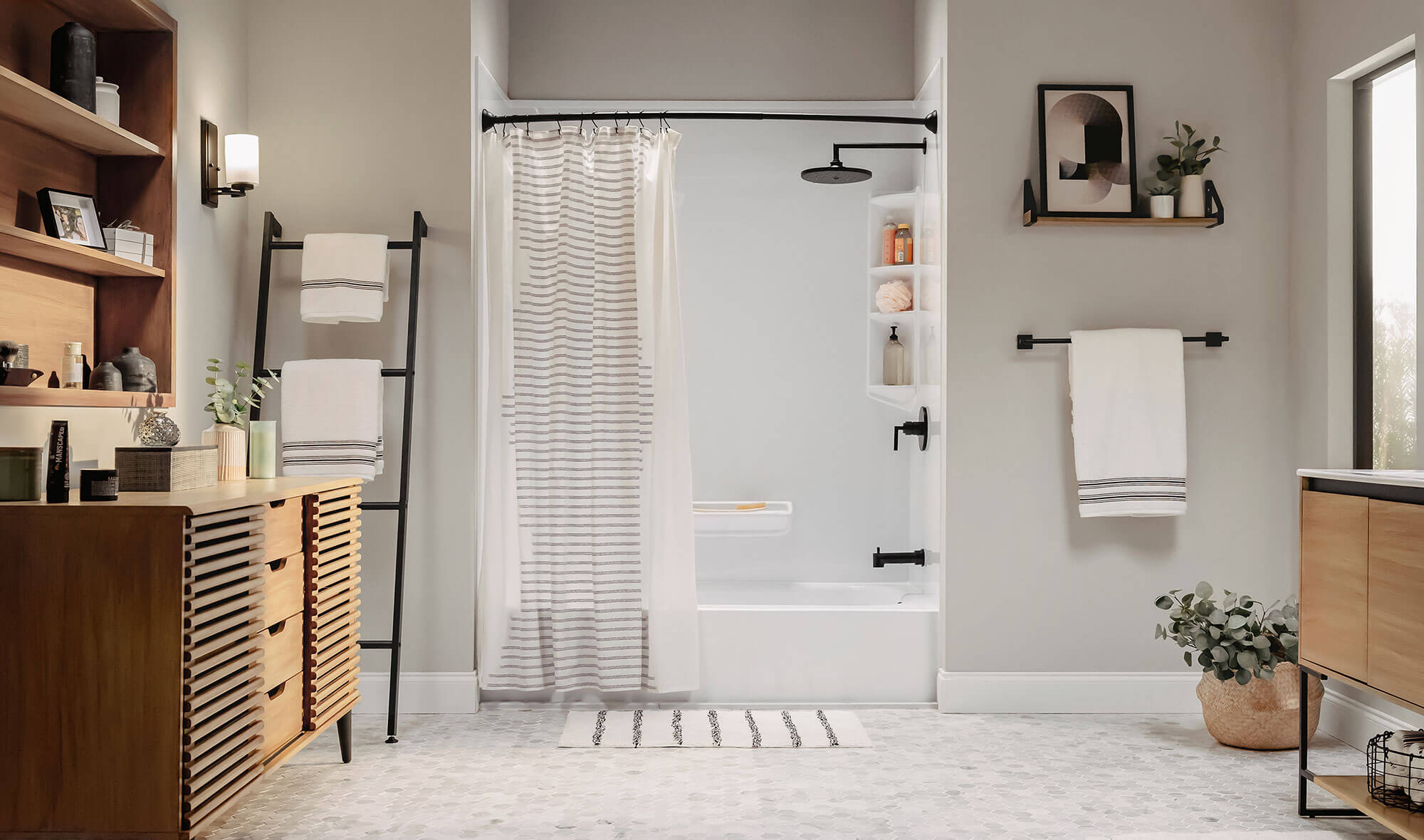A bathtub adds glamor and style to a bathroom. It’s the ultimate in relaxation and provides a lovely spot to start and end your day. But bathtubs are built differently and buying one can be overwhelming because there’s so much to consider—like bathtub materials, dimensions, and shapes.
Tubs are expensive and hard to replace, so it’s important to choose the right one the first time. Our bathtub buying guide covers different bathtub materials and their pros and cons. Choose the perfect tub for your home and lifestyle.
What are Bathtubs Made of?
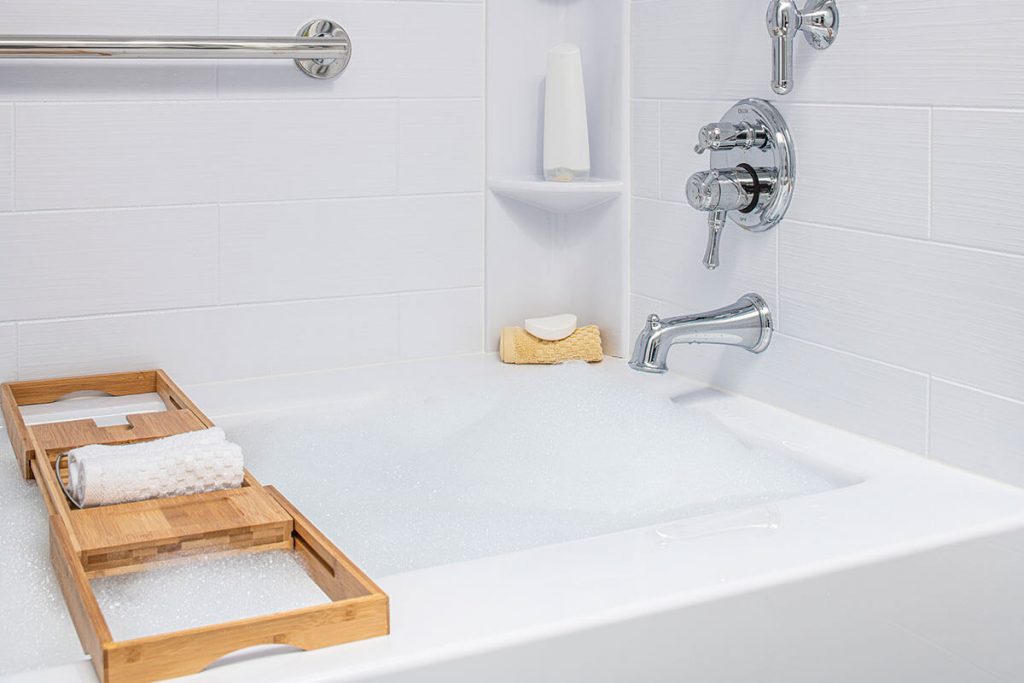
Bathtubs are made of different materials that determine their cost, lifespan, and maintenance.
These materials are:
- Acrylic
- Fiberglass
- Porcelain
- Cast Iron
- Copper
- And more.
Sturdy and non-porous materials like stone resin and enamel-coated cast iron are on the high end of the price scale. These materials are highly durable, easy to clean, and retain heat for a long time. Cast iron bathtubs are the most durable and are made by pouring molten iron into a shaped mold. The mold is then smoothened and coated with enamel. The tubs are resistant to chipping, scratching, and denting, and they can last as long as a house. However, most are heavy and are mainly recommended for ground floor use.
What to Look for in Bathtub Materials

Bathtub materials vary in many ways, and none can fit all applications. So, when choosing one, consider your unique bathing needs, lifestyle, and budget. The key is to find a material that’s affordable and durable. It should match your tastes and design preferences. Here’s what to look for when selecting bathtub material.
Cost
The bathtub material you get will depend on your budget. But don’t just look at the price tag. Consider maintenance, installation fees, and the costs of modifying the floor and walls to support the tub.
Weight
Different bathtubs have different installation requirements and costs depending on their weight. Two tubs may have similar capacities but be made of different materials. The one made with lighter material will be easier and cheaper to install. But a heavy tub made of cast iron will need reinforced floors and will be costlier to install.
Durability
A bathtub’s durability determines its lifespan. The more resistant the bathtub material is to impact, cracking, flexing, and scratching, the longer it will last. No material is resistant to all damages, so choose the one that can survive well in your home environment. For instance, acrylic tubs are the best option for areas with high humidity, but not all acrylic is of the same quality. Some acrylic can leave stains, so be careful with colorful soaps!
Ease of Cleaning and Maintenance
Every bathtub needs regular cleaning and maintenance to stay sanitary. Proper maintenance also ensures the plastic pipes under the tub stay flexible, decreasing the chances of a crack or leak. The bathtub material you choose will determine how easy the tub is to clean and maintain. Porous materials and those that stain easily will be harder to clean. Also, some tub materials react to specific chemicals and tools, so arm yourself with this information by looking for the manufacturer’s recommended cleaners list.
Ease of Installation
Bathtub materials vary in weight and flexibility, and this affects their installation needs. Tubs made of lightweight materials like acrylic or fiberglass are easy to install. Those made with heavy materials like enameled cast iron have special installation requirements and may be difficult to install. Not every handyman may have the knowledge or special techniques required to install every tub type.
Heat Retention
Heat retention determines how long the tub keeps the water warm. Most tubs can keep water warm for 20 to 30 minutes. But if you like to soak for hours, you need a material that can keep water warm for a long time—like cast iron. It retains heat effectively, keeping bath water warmer for longer.
The Most Popular Bathtub Materials

Different types of bathtub materials have different properties and perform well in different applications. For instance, some can resist cracks and scratching but not rust. Others are heavy and expensive but last a lifetime. Let’s look at the most popular bathtub materials.
Fiberglass
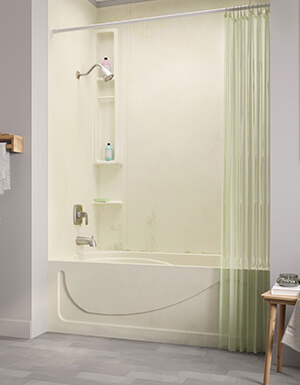
Fiberglass, also called glass-reinforced plastic, is one of the cheapest bathtub materials. It’s a reinforced plastic that’s poured into a bathtub-shaped mold, resin-coated, and then polished. It can last a couple of years before scratches and cracks affect it. Some manufacturers add an acrylic finish to fiberglass to boost its durability.
Pros
- Inexpensive
- Lightweight
- Fiberglass tubs are easy to install and maintain
- The surface is repairable
Cons
- Fiberglass tubs can feel unstable
- Material fades with time
- Thin and flexible
- Cracks and scratches easily
- Porous and brittle
Porcelain over Steel (Enameled Steel)
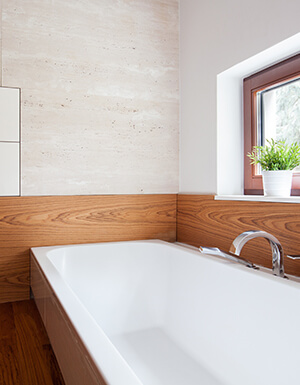
As the name suggests, porcelain over steel is a bathtub material formed by coating a sheet of steel with porcelain enamel. These components combine to form a durable and affordable material with a smooth, glossy surface that’s easy to clean. But while the material is heavier than fiberglass, it has low heat retention and chips easily.
Pros
- Inexpensive
- Long-lasting
- Stable feel
- Easy to clean
- Chemical-resistant finish
Cons
- Surface chips easily
- Somewhat heavy
- Exposed steel may rust
- Poor heat retention
Acrylic
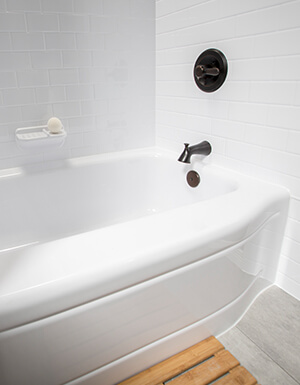
Acrylic is costlier than enameled steel and fiberglass but more durable. It can be used to create a myriad of designs in different colors. This bathtub material is formed by heating a mixture of materials until the desired product quality is achieved. The product is then molded into the bathtub shape and reinforced with fiberglass.
Pros
- Non-porous
- Great heat retention
- Can create matching accessories
- Lightweight
- Affordable
- Durable
Cons
- Sensitive to abrasive chemicals
- Poorer grades of acrylic can be susceptible to scratches
Cast Iron
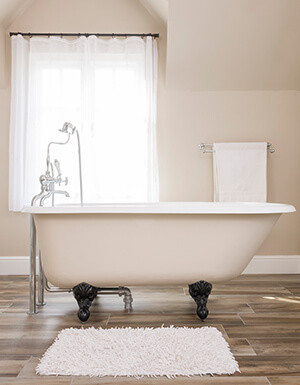
If you want a bathtub that will outlast you, get one made of cast iron. Cast iron is made by reducing iron ore in a blast furnace. Afterward, the liquid iron is poured and hardened into crude ingots. The ingots are remelted along with alloying elements and scrap metal in cupola furnaces and cast into molds for producing different products. While the material is expensive, it’s one of the most durable bathtub materials.
Pros
- Durable
- Scratch-resistant and chip-resistant
- Retains heat for a long time
- Myriad designs
- Surface is repairable
Cons
- Extremely heavy
- Requires additional support
- Expensive
Cast Polymer
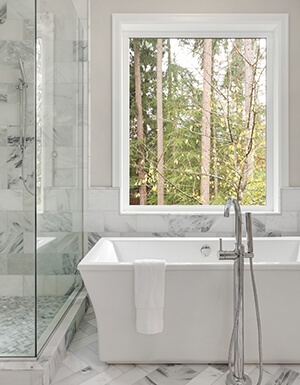
Cast polymer is an umbrella term that refers to the production of “synthetic” cast products like cultured marble, cultured onyx, and cultured granite. Recently, additional materials like engineered stone and acrylic resin-based materials have been added to the group. The casting process involves pouring a liquid resin into a mold, filling the cavity using gravity, and allowing the polymer to harden. Cast polymer molds are usually coated with a gel for aesthetics and to reduce porosity.
Pros
- Affordable
- Can make a variety of designs
- Easy to clean
- Stain-resistant
- Relatively durable
Cons
- Can be expensive depending on the exact material used
- Sometimes brittle
- Cracks are irreparable
Ceramic
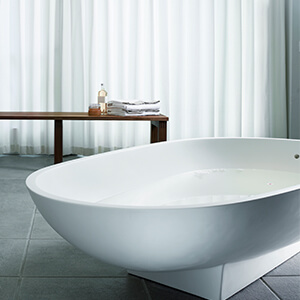
Ceramics are made by mixing clay, powders, earthen elements, and water. The mixtures are then shaped into desired forms and fired in a high-temperature oven (a kiln). Once they cool down, they are covered with glazes—decorative, waterproof, paint-like substances. Tubs made with the material are often used as accent pieces in old-fashioned bathrooms and are either made of smooth, glossy ceramic or covered with ceramic tile on their outer surfaces.
Pros
- Variety of designs
- Inexpensive
Cons
- Complex installation
- High maintenance
- Can be uncomfortable
- Can be expensive
Stone
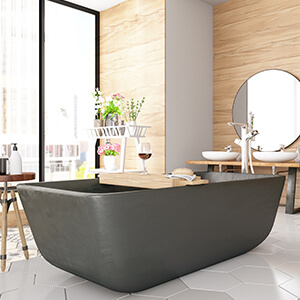
Stone is a superior choice compared to other materials. Stone bathtubs are made from natural stones like marble, onyx, sandstone, travertine, and granite. They are high-end and costly tubs that have a natural gorgeous appearance. Even without water, stone tubs are extremely heavy and need firm structural support. They also require more maintenance than other tubs.
Pros
- Natural look
- Sturdy
- Good heat retention
Cons
- Very heavy
- Extra support required
- High maintenance
Wood

Wood is rarely used to make bathtubs because the material is porous, and its pore structure greatly affects its behavior. You may have to custom-order a wood tub and be prepared to pay top dollar. Wood bathtubs are mostly made from African or Honduran teak, maple, ash, walnut, and cherry. A gel coating is then added for a glossy look.
Pros
- Natural look
- Unique style
- Good investment
Cons
- Expensive
- High maintenance
Bath Fitter® and Acrylic
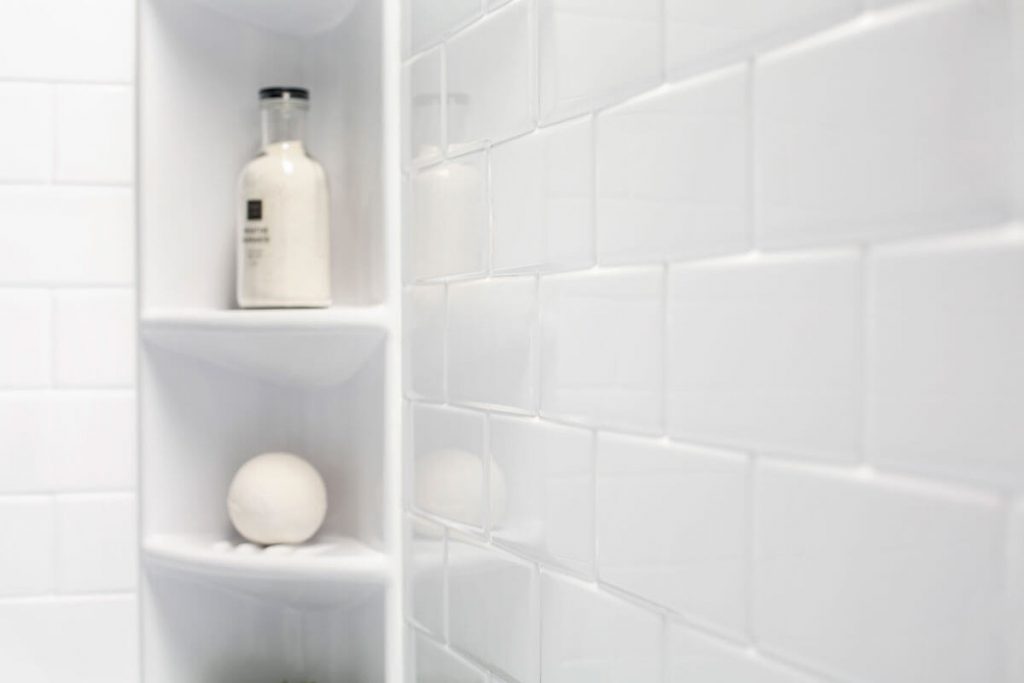
Bath Fitter® loves acrylic, and so do our customers. If you’re remodeling your bathroom and want to replace your old tub, let Bath Fitter® help. Get a high-gloss acrylic tub liner. Choose one that matches the tub and walls and gives your bathroom a timeless new look. Acrylic tub liners are versatile, durable, affordable, and come in a wide range of designs. They are also lightweight, and our Installers are experts in installing the product using a process we perfected over the course of 38 years – and all it takes is one day!
Unlike refinishing or reglazing, liners offer a durable and long-term solution to your bathtub problems. Your tub won’t end up in a landfill, and your bathroom will be as stylish as you wanted. There’ll be no mess to clean up and you’ll have a gorgeous, modern bath. We stand behind our high-quality product and offer our customers a lifetime warranty (1) in return.
Closing Thoughts
The best bathtub materials vary in many ways but have two things in common: high durability and ease of maintenance. If you feel this is the time to create your dream bathroom, use our guide to ensure you choose a tub that fits your style, budget, and needs.
A bathroom renovation can increase the resale value of your home. You’ll also enjoy spending time in your new bathroom. Save time and money by installing a Bath Fitter® tub. Our beautiful acrylic bath liners are custom-made and fit over existing tubs, so there’s no demolition or mess. Our one-piece wall is watertight and guaranteed for life (1) to allow for a stress-free reno.
(1) Subject to limitations, see location for details
